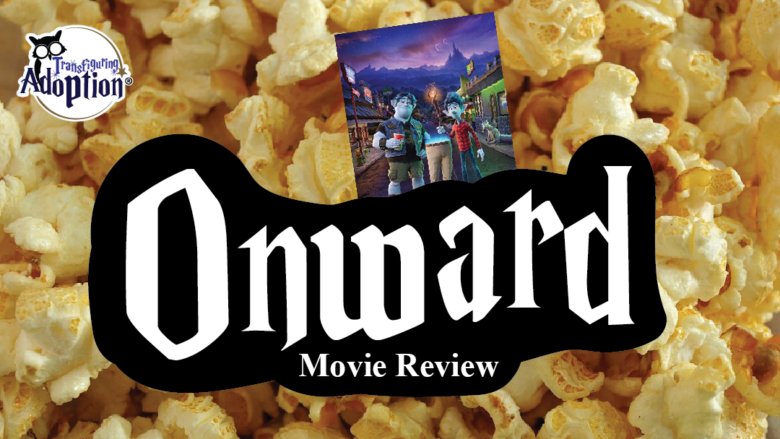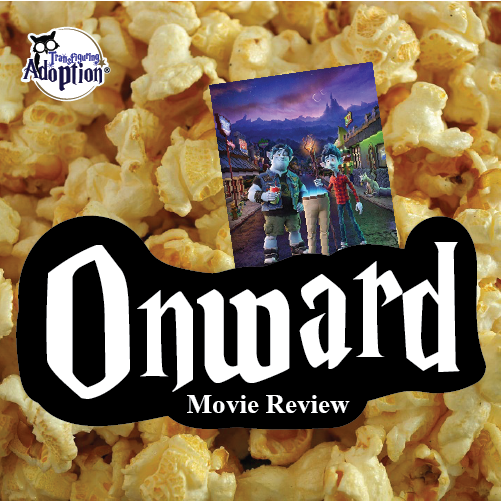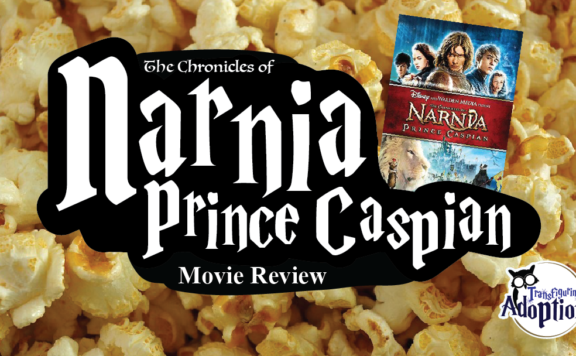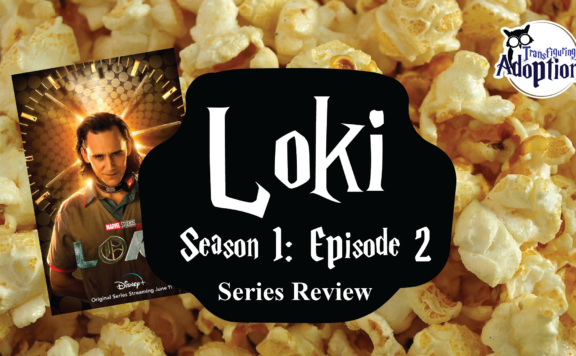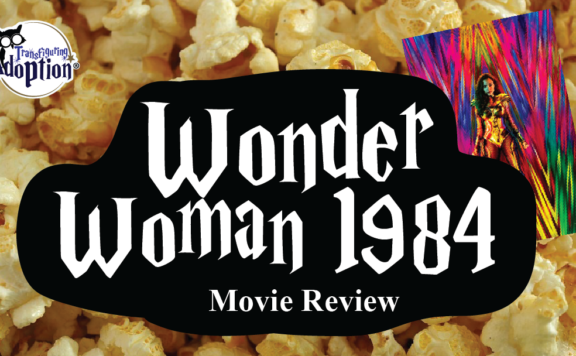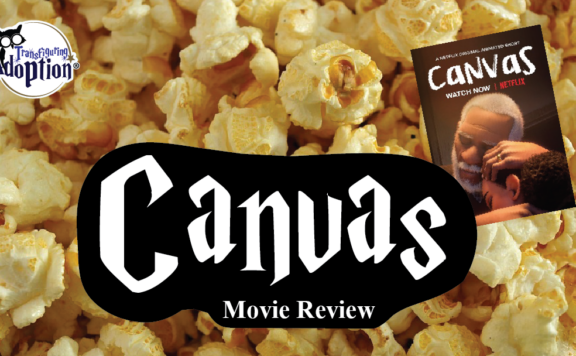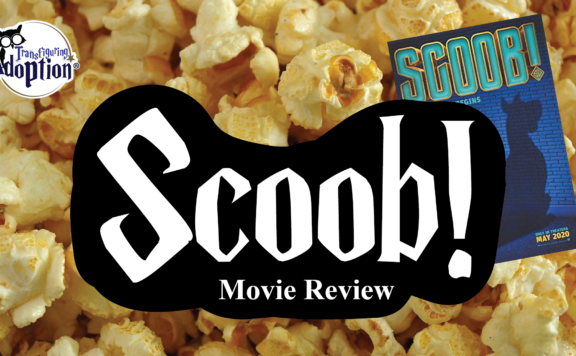Grade:
Transfiguring Adoption awarded this movie [4] Hoots out of 5 based on how useful it will be for a foster/adoptive family.
[Learn more about our Hoot grading system here]
Movie Info:
From the Cover of Onward by Disney/Pixar:
“Set in a suburban fantasy world, Disney-Pixar’s “Onward” introduces two teenage elf brothers who embark on an extraordinary quest to discover if there is still a little magic left out there.”
Onward (2020) follows the story of brothers Ian (Tom Holland) and Barley (Chris Pratt) as they go on a quest to bring their deceased father back to spend one day with them. Disney/Pixar tends to do a fantastic job of making movies that are family friendly in a way that is enjoyable and fun for kids to watch but also manage to be full of references and jokes that adults will enjoy and Onward is no exception. The storytelling style is reminiscent of Disney’s Zootopia in that it takes animals (or in this case, mythical creatures) and places them into a modern world that is similar to our own which makes for a fun mashup. The film explores heavy themes of loss and grief while still managing to maintain the fun and magic in a way that only Disney can. Pratt and Holland have great chemistry as brothers (along with a fun reference or two to the MCU (Marvel Cinematic Universe) thrown in for those with a keen eye), and the rest of the cast’s voice acting brings a host of imaginative characters to life.
This movie would be most suitable for older children (upper elementary school) and teens. Younger children may likely enjoy the fairytale creatures, bright colors, and humorous moments but the overall presentation of the themes of grief and loss are a bit complicated for younger viewers to fully grasp and the story proceeds at a fast pace, often jumping from one adventure to the next, and may be hard for them to follow. There are also enough moments of peril and suspense, especially in the climax of the film, that would likely be scary for younger children watching on the big screen. However, the level of violence and complicated themes is on par with that of most Disney films (with the added bonus that there are no on-screen deaths or serious injuries). So, if your family is okay with films such as The Lion King, then they will likely be okay watching Onward.
** Spoilers Could Be Ahead **
How Is This Relevant To Adoption & Foster Care?
Onward (2020) does not directly relate to Foster Care or Adoption as the main characters live with their mother. However, the story focuses on the two brothers, Ian and Barley, dealing with the loss of their father and processing their grief surrounding that, which is something many children who have experienced foster care or adoption can relate to. Every child who has been adopted or is in foster care has experienced the trauma of loss of their biological parent(s) in some form and can likely relate to the ways in which both Ian and Barley are dealing with that loss. Ian never knew his father and longs for any mention or connection to him. Barley is dealing with lingering guilt over not saying goodbye to his dying father because he was afraid. They are given the opportunity to bring their dad back for one day using a magic spell and must go on a quest in order to get the spell to work. During their journey they are able to bond with one another and process their loss together and realize that some of the things they felt like they were missing by not being with their father they are able to provide to each other.
Discussion Points:
- Dealing with Loss/Grief
The movie centers around two brothers who have lost their father (one never even met him) and find out there is a way to bring him back for 24 hours. Both brothers struggle with the loss of their father in different ways. Ian never got to meet his dad and longs to know what it would have been like to have him around. He has an old recording of his dad and mom talking and he listens to it over and over, even answering the questions his dad asks to pretend he is really talking to him. He wears his dad’s old sweatshirt around and eagerly listens to any stories his family or others can tell him about the dad he never knew. Barley was older when their father died so he has a few memories of him, but not many. We find out late in the movie that his dad had been really sick and Barely had been too afraid to go in and say goodbye to him and carries guilt over that. He tells Ian that he vowed to ‘never be afraid again’ after that and explains that’s why he’s so boisterous and overly confidant. Both of these are reactions to loss that our kids can likely relate to.
- Believing in Yourself/Finding Inner Strength
At the start of the movie, Ian’s brother Barley tells him, “there’s a mighty warrior inside of you- you just have to let it out!” And throughout the movie he encourages his brother to find his voice and use his qualities to help complete their quest. It turns out that Ian has magic powers he didn’t know about, but he struggles to be able to use them because a key part of the magic is believing you can do it. Ian doesn’t have the confidence for this and often doubts himself, making his magic fail. Barley keeps encouraging him and helping him learn to believe in himself. There is one scene where Ian needs to make an invisible bridge and he’s afraid, so Barley ties a rope around his waist as a safety net. Halfway across the gorge the rope breaks, but Barley doesn’t tell him. Ian makes it across and finds out that the rope hadn’t been there. At first, he’s mad at Barley and says, “I needed that rope!” and Barley questions “did you?”. Ian realizes that he didn’t need it, that he had the ability to complete the skill on his own and he believed in himself enough to make it happen. When going through the trauma and loss associated with foster care and adoption children can often lose their own confidence. Despite whatever efforts they made or how badly they wished it, they weren’t able to stop the bad things that happened to them. Often, they feel like they have no control over their lives and don’t believe they have the ability to make things happen. Watching the way that Ian learns to believe in himself because of the constant encouragement of his brother may be a way for kids to identify their own inner strengths and help them see the benefit of having a support system and caregivers who encourage them.
- Self-Identity/Embracing Who You Are
A number of characters in the movie struggle to know who they are where they fit in. Ian starts out the movie out making a list of the ‘new me’ he wants to be hoping he can me more like his dad, more outspoken and have more friends. He learns how to accept who he is and becomes a more confident version of himself. Barley, on the other hand, is given a hard time because of his love of the game he plays, but it turns out that his knowledge of aspects of the game and magic spells helps he and Ian succeed on their quest. It takes the different skills and abilities of both brothers to complete their quest and bring their father back. We also see this addressed in the character of Corey the Manticore. She used to be a fierce warrior but gave that up after feeling like she’d sent too many people into danger on her quests. She instead runs a family-friendly restaurant. But Ian and Barley and their mom help her remember who she was and embrace that warrior again- she is even able to help Mom get to the final battle in time to help defeat the dragon. In the end she reopens her restaurant and finds a balance between the two aspects of her personality. Kids who have been through foster care or adoption often struggle with their own identity and may feel like they don’t fit in or are different from their peers. Or perhaps they feel like Manticore- that they’re one person on the outside but there’s another person inside of them they feel like they have to hide because it might be ‘dangerous’ or disliked. Use this as an opportunity to talk about the unique personality traits, talents, and interests they bring to the table and how these differences make them unique and might enable them to do things others can’t.
- Accepting Alternative Parental Figures/Role Models
When Ian finds out he will finally be able to meet and talk with his dad he makes a list of all the things he would like to do with him- everything from playing catch to having a heart-to-heart conversation. At the end of the movie he realizes and accepts that he’s not going to get to do any of these things with his dad. As he starts to cross items off his list, he comes to the realization that he has done all of these things with someone already- with his brother. Ian processes the fact that while he never got to know his biological father, he’s had a great role model in his life after all and his brother has been that person for him. He gives up his chance to meet his father and tells Barley he no longer needs to because, “I have had had someone to look out for me- I never had a dad, but I always had you.” This can be a great opportunity to talk with youth about the role models they have in their life. Like Ian, they aren’t able to do all the things they want to with their biological parent(s) and that is definitely hard. But maybe they have a foster/adoptive parent, sibling, mentor, caseworker, or some combination of the above who can do these things with them. It isn’t the same as having that biological parent there, but they can still experience these things with someone who loves and cares for them.
Cautionary Points:
- Loss of Parent
The movie centers around the death of Ian and Barley’s father and their quest to bring him back for a day. There is no depiction of his death on screen but there are very real explorations of the grief and loss these boys have experienced and the different ways that effects each of them. It may be difficult for children who have experienced a recent or traumatic loss to watch this play out.
- Moderate Peril/Action
There are several actions sequences of mild to moderate intensity including a few mild fights and some high-speed car chases. The brothers also get caught in a deadly obstacle course and must survive various booby traps. Then at the climax there is a somewhat intense fight sequence where a stone dragon threatens the brothers and causes destruction to the town before being defeated. However no one suffers lasting or serious harm in any of these sequences and the film does a good job of mixing in humor (for example, the deadly rock dragon has a face that is a child-like painting of a dragon) that keeps the scenes from being too intense. Some children who have experienced trauma have a harder time regulating their emotions and dealing with adrenaline, due to the overuse of their body’s fight-or-flight response and can struggle to get back their baseline when viewing this type of action sequences.
- Fire/Destruction
After Manticore unleashes her inner warrior, she loses control and accidentally burns down the restaurant and there is a scene of customers and families having to flee the burning building and escape the fire. There is also a magic-induced rockslide later on, a scene where characters are trapped in water momentarily, and a scene at the end when a rock-dragon destroys the school and threatens the main characters. For youth who have experienced natural disasters or traumatic events involving water or fire these scenes may be upsetting.
- Negative Interactions with Law Enforcement
There is a scene where the boys are pulled over by police officers and use magic to deceive them, so they don’t get in trouble or risk their dad being discovered. There is also a fairly intense car chase scene where the boys run away from police officers in order to complete their quest. Children who have been through foster care often have experiences with law enforcement removing them from their homes and may have had other negative interactions with them. The police in the movie are portrayed as trying to protect the town and the boys, but also are shown through the boys’ eyes to be an enemy- always interfering with Ian and Barley being able to complete their quest. For children who’ve had negative encounters with police this may reinforce their beliefs that they should run from or lie to law enforcement to protect themselves and those they care about.
Discussion Guide:
- Which brother do you think you’re more similar to? Why?
Caregiver Note: Ian is an introvert who worries about trying to make others like him and fitting in. He is anxious and scared of everything. Barley is outspoken and labeled as a ‘troublemaker’ by the townspeople. Both brothers are likely very relatable to our kids- being adopted or in foster care can often make kids feel like outsiders and they may struggle to fit in and to make friends. A lot of time they are also misunderstood by the general public and can be labeled as ‘out-of-control’ or ‘troublemakers’ the way that Barley is. Talking about these feelings and struggles in these two characters and the ways they deal with and overcome them during the course of the movie can be a way to help kids recognize and process these feelings in themselves. - 2. Early in the movie Ian and Barley’s mom tells them to stop spending so much energy holding on to the past and to focus on their future. What are the ways they and other characters are able to do this in the movie? How do they find a balance between the two?
Caregiver Note: When children have experienced trauma, it can make it so that they feel trapped in their past and unable to more forward because of what they have been through. It is an important step for them to be able to talk about and process what has happened to them so that they can begin to heal and to imagine a future for themselves. Ian and Barley are able to do this on their quest- they spend time talking to one another about their feelings of guilt and grief which helps them be able to process it. They also learn to help and rely on one another more and build up their relationship with each other which makes the loss of their father hurt a little less. They are able to find healthy ways to keep their memories of their father alive while still being able to move forward with their lives. - 3. Activity: Use what you’ve got!
Caregiver Note: Barley reminds Ian when they face difficulty that “on a quest you have to use what you’ve got!” and they find resourceful ways to solve problems. Pretend that you’re on a quest and have to make something out of only things you find around the house! For younger kids this may need to be more guided, such as laying out a selection of materials on the table (think paper towel tubes, egg cartons, newspaper, aluminum foil along with basic craft supplies such as glue/tape, markers, etc.) Then give kids a challenge such as building a bridge that can hold a certain number of pennies or a tower that is as tall as possible but can stand on its own. This can be a fun way to bond while also working on skills such as teamwork, creativity and resourcefulness. - 4. Barley is called a ‘screw-up’ throughout the movie by various adults because he’s ‘always getting into trouble’. How does this label affect the way Barley behaves and the choices he makes? Later, during a spell that requires honesty we see Barley find out that his little brother thinks this way about him too. How does Barley react to finding out his brother feels this way about him?
Caregiver Note: Because of their past trauma, foster and adoptive kids often have behavioral issues that may result in them acting out. Because of this they are often labeled as ‘trouble-makers’ and ‘screw-ups’. Teens in the foster care system especially feel this way. We see Barley ignore the adults who say this about him and continue on with the behaviors, perhaps even more so because of their labels. It appears as if he doesn’t really care that they think of him in this way. However, later we see his hurt reaction upon finding out that Ian thinks of him as a screw-up to. This hurts more because Ian is someone who’s opinion he values, and it may feel like a betrayal. This can also be a lead in to talking to youth about if they feel like this label has ever been applied to them and how that makes them feel, and if it affects the choices they make. - 5. Barley then tells Ian “it’s not fair for you to call me a screw up if you don’t even give me a chance to do things right.” How does Ian react, and does he change his behavior towards his brother after this? Have you ever felt like people jump to conclusions about you without getting to know you first?
Caregiver Note: Here, Barley makes the point that because he’s been labeled a ‘troublemaker’ due to past choices or mistakes, no one even gives him a chance anymore and so he feels like he can’t change or fix anything because no one lets him try. Children who have been likewise affected by similar labels likely relate to these feelings. They may have given up on trying to be ‘good’ because they feel pre-judged based on their past choices and behavior. They can feel like the world is out to get them and that even when they haven’t done anything wrong, they are the first suspect when anything bad happens. This can be an opportunity to talk about fresh starts and giving them the benefit of the doubt and as you are able to allow them a safe space and opportunity to make different choices without fear of being misjudged. - 6. The first time Ian tries to make the invisible bridge, he fails and falls off the cliff and is saved by the rope he had Barley use as a safety net. Barley tells him, “Now you know the worst that can happen so there’s nothing to be afraid of.” What does he mean by this? How does it help Ian be able to complete his task?
Caregiver Note: Many children who have experienced trauma have severe anxiety. They are often afraid to try new things because experience has taught them that bad things happen to them. The biggest cause of anxiety is fear of the unknown. This can lead to catastrophic thinking about all the unpleasant possibilities that might occur. One way to overcome this is to take a specific situation and think about the worst possible outcome. Then talk through what they would do if that happened and help them make a plan. If needed, you can take it one step further and talk through all the possible outcomes and the likeliness of each. Once you have a plan for dealing with the worst possible scenario it can take some of that fear away because there is no longer an element of surprise- not only do they know what could happen, but they have a plan for how they will deal with if it does. Talking about this scene is a great way to illustrate this concept and may spark discussion of your child’s own fears. - 7. In order to use magic, Ian has to believe in himself, which he struggles with at first. However, he is able to succeed with the encouragement of his brother. Have you ever had something you found difficult but were able to accomplish because someone else believed in you? How can I best demonstrate that I believe in you when you’re trying something new or difficult?
Caregiver Note: Often times, foster and adoptive youth aren’t used to having adults or caregivers on their side, which can make them feel very alone. Because of this their self-esteem can often suffer. If they grew up in an abusive or neglectful home, they may not have gotten the positive feedback growing up that helps this trait develop. Some children may not be able to give an example of having someone believe in them, but it can be helpful to talk to them about how you believe in their abilities and to have them think about what form of encouragement would be most helpful to them. For some, verbal encouragement and praise while attempting a task might be the most helpful, whereas for others they might prefer more hands on assistance, or even for you to keep your distance in order to demonstrate that you trust them to figure it out and will be there when they are ready. Talking about the different ways that Barley supports Ian in learning magic may help them to think about what that would look like in their life. - 8. Several times in the movie we see characters embrace their true nature- such as Corey the Manticore becoming a warrior again, Colt Bronco deciding to run rather than drive like the centaurs of the past, and Ian accepting his magical abilities. Do you think it was important for these characters to accept their ‘inner selves’? In what ways do you feel like you embrace or hide your inner self?
Caregiver Note: When children have experienced abuse and neglect or other trauma, they tend to feel like they did something wrong or that there is something wrong with them that caused this to happen to them. Because of this, they may withdraw or try to change aspects of their behavior or personality to try and make things better. There is also a lot of shame associated with having been through foster care or adoption and feelings of ‘not being wanted’ by their biological family. This may make them more likely to pretend to be someone they’re not or hide aspects of themselves out of fear of being rejected again. This can be a way to talk to them about accepting who they are and that you’ll love them regardless of what their ‘inner self’ might be like. In the movie it is seen as a good thing and frequently referred to as characters embracing their inner warrior. Children who have been through trauma are extremely resilient and they all have a fierce warrior inside of them, just like characters such as Mom and Corey. And maybe this warrior comes with behaviors or traits that others might not understand, but it’s a part of who they are that got them through everything to where they are today and for that it is worth embracing. - 9. Throughout the movie Barley says that he has three memories of his father. However, at the end he admits that he actually has 4 memories. Why do you think he kept the fourth one a secret? How does it affect him and his choices?
Caregiver Note: Up until this point Barley only shared his happy memories of his father with his family. The ‘fourth’ memory he admits to having is one that fills him with regret. When his father was sick in the hospital, he was afraid and did not go say goodbye to him when he had the chance. He harbors guilt over this and said the experience made him vow to ‘never be afraid again’ which is why he often projects over-confidence and bravado that tend to get him into trouble. Talking about this experience of Barley’s may help children open up about memories or things they feel guilty or regretful about and the ways in which those feelings connect to their behavior. - 10. Ian has waited the entire movie to see his dad and when finally has the chance, he gives it up to allow his brother the opportunity. Why do you think he makes that decision?
Caregiver Note: Ian spends the entire movie surviving all manner of danger for the chance to talk to his father, even just for a few minutes. And then when he has the chance, he chooses not to which can feel like a let-down when viewing the movie- to see the protagonist work so hard for something and then not get it. But it’s important to note that this is Ian’s choice and that the reason he makes it is because he has processed his grief already at this point and made peace with the loss of his father. He no longer needs the closure of speaking with him. A big part of this for him is the fact that he realized he has other parental figures in his life (in this case, his brother) who are able to be what he wanted and needed from his father. He also wants to give his brother the opportunity for closure that he needs- because Barley didn’t say goodbye to his dad when he had the chance as a child and has so much guilt over it, he needs this moment in order to process his grief. One form of closure isn’t better than the other, but the important thing to note and talk about is that both brothers are able to come to terms with things in their own way.
About the Author: Jenn Ehlers
Jenn is a central Virginia native who received her BA in Psychology from the University of Virginia in 2012. Since then she has worked for a local mental health agency and the Department of Social Services in various capacities and has been involved in her community’s efforts to create a Trauma Informed Network. Currently Jenn works in vocational rehab and mentors youth in foster care. When she isn’t working, Jenn enjoys writing stories, anything and everything Harry Potter, and spending time with her niece and nephew.
**Transfiguring Adoption is a nonprofit organization seeking to nurture growth in foster and adoptive families by giving a HOOT about their families. Transfiguring Adoption does not intend for its reviewers nor its review to be professional, medical or legal advice. These reviews and discussion guides are intended to help parents to better be able to connect and understand their children who come from traumatic backgrounds.
